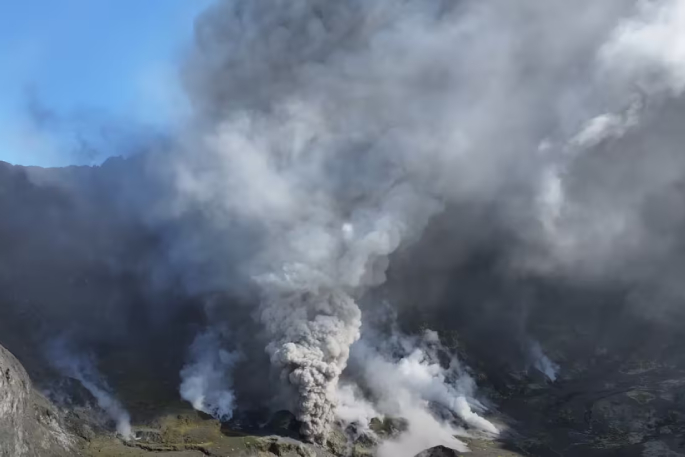An increase in sulfur dioxide emissions in combination with the minor volcanic eruptions observed over the weekend suggest there is magma in the shallow system at Whakaari/White Island, says duty volcanologist Ery Hughes.
The Volcanic Alert Level remains at Level 3 - minor eruption, and the Aviation Colour Code remains at Orange.
"Clouds above Whakaari are making it difficult to confirm whether the minor eruption on Sunday [August 11] has finished," says Ery.
"If activity is continuing, there is a low probability of any ash affecting the mainland."
Ery says on August 11, TROPOMI – a satellite capable of measuring daily sulfur dioxide emissions – clearly detected SO2 emissions from Whakaari.
"This is the first time SO2 has been detected by the satellite since the recent activity that began in May 2024.
"TROPOMI is less sensitive than our regular gas flights and hence this suggests SO2 emissions from Whakaari have increased. We will be conducting a gas observation flight when conditions allow to confirm this."
Ery says the minor eruptions with ash emissions observed over the weekend and the increase in SO2 emissions indicate that magma - molten rock - has ascended to shallow levels beneath Whakaari.
"Shallow magma could cause high temperature gas venting, which will likely cause regular eruptive activity to continue.
"We are currently observing intermittent minor volcanic eruptions, with eruption hazards largely restricted to the island, and importantly, there is no current indication that activity will increase in magnitude."
GNS volcanologists will continue to closely monitor Whakaari/White Island with remote cameras and satellite imagery, following more eruptive activity on Monday afternoon.
"We plan to conduct gas and observation flights when weather conditions are suitable," says Ery.
"Without an on-island monitoring network, changes in activity could occur at short notice and changes in Volcanic Alert Level may be delayed depending on monitoring conditions. We will provide updates when information becomes available."
"Whakaari/White Island produced a more vigorous plume [Monday] afternoon, transporting minor volcanic ash to the east of the volcano," says Duty Volcanologist Geoff Kilgour.
Geoff says there is a low probability of this ash affecting the mainland.
"This weak eruptive activity was identified through a combination of webcam imagery and satellite data provided by our colleagues from the Volcanic Ash Advisory Centre at NZ MetService."
The activity appears to have been most active from around 1pm to 3pm and has since diminished, Geoff says.
"Satellite data shows that the plume appears to have contained a minor amount of volcanic ash.
"As a result of these observations, the Volcanic Alert Level has been raised to Level 3 (minor eruption) and the Aviation Colour Code has been raised to Orange."
Geoff says earlier on Monday afternoon, the relatively clear skies above Whakaari allowed for good quality observations of Whakaari.
"And from about 1pm, the volcano started producing a plume carrying a low concentration of volcanic ash."
He says the current wind direction is from the west, resulting in ash being dispersed ENE of the island, towards the northern end of East Cape.
"Without sensors on the island, we continue to rely on remote cameras and satellite imagery and because of this, short-term changes in activity are difficult for us to identify," says Geoff.
Auckland-based Geoff Mackley captured drone footage of active volcano Whakaari/White Island’s crater during a phase of minor eruptions and heightened unrest on the weekend.
Further information about the Volcanic Alert Levels and what they mean can be found here.
More information on the recent minor eruptions can be found here.



0 comments
Leave a Comment
You must be logged in to make a comment.